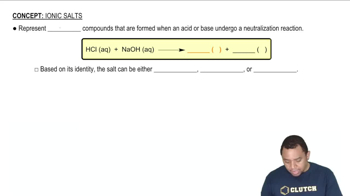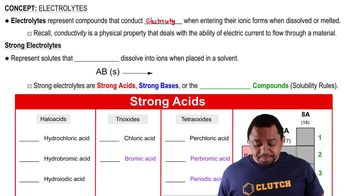Here are the essential concepts you must grasp in order to answer the question correctly.
Galvanic Cell
A galvanic cell is an electrochemical cell that converts chemical energy into electrical energy through spontaneous redox reactions. It consists of two half-cells, each containing an electrode and an electrolyte. The flow of electrons from the anode to the cathode generates an electric current, which can be harnessed for work.
Recommended video:
Salt Bridge
A salt bridge is a device used in galvanic cells to maintain electrical neutrality by allowing the flow of ions between the two half-cells. It typically contains a gel or solution of a salt that does not react with the cell components. By facilitating ion movement, the salt bridge prevents charge buildup that would otherwise halt the reaction.
Recommended video:
Electrolyte
An electrolyte is a substance that dissociates into ions when dissolved in a solvent, allowing it to conduct electricity. In galvanic cells, electrolytes are crucial as they provide the medium for ion exchange between the anode and cathode. The choice of electrolyte can affect the cell's voltage and overall efficiency.
Recommended video:
Electrolytes and Strong Acids
 Verified step by step guidance
Verified step by step guidance


